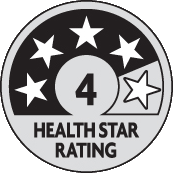Wildberry Ambrosia Icecream - Much moore - 1L
This product page is not complete. You can help to complete it by editing it and adding more data from the photos we have, or by taking more photos using the app for Android or iPhone/iPad. Thank you!
×
Barcode: 9416312272584 (EAN / EAN-13)
Quantity: 1L
Brands: Much moore
Categories: Plant-based foods and beverages, Beverages, Plant-based foods, Cereals and potatoes, Dairy substitutes, Cereals and their products, Milk substitutes, Plant-based beverages, Plant-based milk alternatives, Cereal-based drinks, Oat-based drinks
Labels, certifications, awards:
Australian made, Health Star Rating, Health Star Rating 4
Countries where sold: New Zealand
Matching with your preferences
Report a problem
Data sources
Product added on by smoothie-app
Last edit of product page on by lcmortensen.
Product page also edited by inf, roboto-app, segundo.










